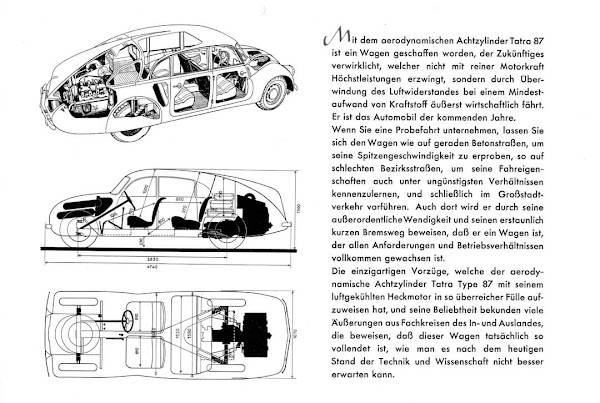
In the aftermath of the Allied victory over Germany in the Second World War, the western allies established an intelligence sub-committee to investigate and analyze German technology. Technicians and specialists delved into every aspect of German industry, from aeronautics, optics, electronics, radio, chemicals, mathematics and, of course, automobiles. The Americans had little interest in German automobile technology, but the British were very interested. Every type of German vehicle they could get their hands on were shipped to Britain and studied. Vehicles studied included the Auto-Union and Mercedes Benz Grand Prix cars, the KDF Volkswagen (actually two military Kubelwagens) and the DKW F9 prototype (aka the Werner car https://dkwautounionproject.blogspot.com/2017/07/1939-dkw-f9-prototype.html). Famously, the Volkswagen was passed to the Rootes Corporation for evaluation. Rootes dismissed the Volkswagen as 'not meeting the minimum requirements of a motor vehicle' and the rest, as they say, is history. Assessing new technology and unorthodox designs was not a strong suit of the British auto industry, which remained wedded to traditional techniques and concepts.
Vauxhall Motors received a Tatra T87 former staff car for evaluation in 1945. The car was in terrible condition, with its suspension shot, engine out of tune and a different set of tyres and rims on each of the four wheels. The car not repaired but tested 'as is' and, consequently received a very poor evaluation. The Vauxhall report warned that the type was dangerously unstable at anything above a medium speed, concluding with the assessment that the T87 was effectively a bad design with nothing to be learned.

Many of the criticisms in the summary are niggardly and superficial, such as complaining about the floor mounted gear shift impeding the driver and front passenger from switching seats - this is inherent in all floor mounted gear shifts. Similarly the luggage compartment being behind the rear seat - again, a very common feature in cars from the 1930s which did not have an external opening boot. This only became a standard feature in the 1940s. These weak arguments reveal that the examiners were not really interested in learning from unorthodox.

If the British auto industry were really interested in evaluating the Tatra, they could easily have referred to the test drives and technical reviews of the earlier T77 model of the 1934, which had been widely discussed in the automotive press of the time. Examples of which are published here:
The Motor: https://tatrat600.blogspot.com/2022/04/1934-tatra-t77-review-in-motor.html
The Autocar: https://tatrat600.blogspot.com/2022/04/1935-tatra-t77-autocar-review.html

Captain D Fitzmaurice, was the sole concessionary for the British Empire and drove a T77 for several years until his untimely death in the later 1930s. Fitzmaurice's review of the car's performance was glowing.

The purpose of the BIOS report was not to provide an honest assessment of the vehicle and its technical aspects, but was propagandist in nature. The purpose was to reinforce the view that there was nothing to be learned from the Germans and the British motoring industry could continue as it always had, free from new ideas.
Report on Rear Engined V8 Tatra Car Type 87
Foreword

Following arrangements made by the British Intelligence Objectives Sub-Committee and the S.M.M and T regarding material from Germany, the car was made available to this Company for trial.
Because of its unorthodox design, the Tatra possesses many features of interest, most of which have been commented on in this report.
The report is by no means exhaustive, as no attempt was made to carry out a strip-down, detailed weight analysis or bench test, but rather to check up and report upon the general effect from the user’s point of view of this rear-engined layout. The various specific tests included are those which we considered to be of interest and capable of execution in the time available.
M.A.Dean
Passenger Vehicle Experimental Engineer,
Vauxhall Motors Limited.
Luton
15th July 1946
The full copy of the BIOS report is now available here. It makes very interesting reading: https://tatrat600.blogspot.com/2022/04/bios-final-report-no-922-tatra-car-type.html
Further analysis will be provided here.








































